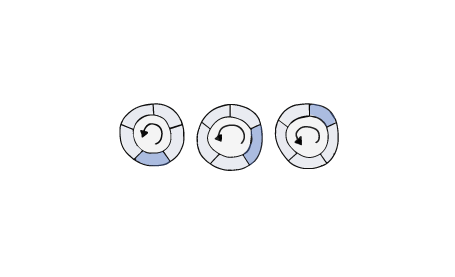
Interaction Situation
The user has made an input. This input needs to be processed by the robot. The indication of this information processing is not so much as necessity for the robot that should be able to process any input in an instance. Rather, it can be used as a stylistic means for interaction design that helps to slow down the interaction and make the exchange with the robot more natural and pleasant for the user.

Solution
Let the robot express that:
The process of processing or loading information can best be expressed through two different modalities: The first option is a light animation showing a progressive light signal. The loading process is completed when the last part is illuminated and the light goes out. Use a rather cold color (e.g. blue) for the light animation.
The second option is a rotation of the robot. The speed can be adjusted to the loading time. The loading process is completed when the robot’s front faced the user again.
Related patterns:
Needed by: Processing, Getting ready to play
Works well together with: Inside Turn
Opposed patterns: Input Processing Failed

Examples

Rationale
In the design of technical systems loading information is commonly expressed through linear or circular progress indicators. These two concepts are usually realized as visual animations in 2D, but they can also be applied to robots using light or movement.
Research indicates that, in addition to motion, cold colors are attention grabbing. In light animations that communicate information processing, movement of the light signal should thus best be combined with cold light colors such as blue.
References and further reading:
- Google Material Design Library – Progress Indicators: https://material.io/components/progress-indicators#usage
- Baraka, K., & Veloso, M. M. (2018). Mobile service robot state revealing through expressive lights: Formalism, design, and evaluation. International Journal of Social Robotics, 10(1), 65–92. https://doi.org/10.1007/s12369-017-0431-x
- Choi, Y., Kim, J., Pan, P., & Jeung, J. (2007, September). The considerable elements of the emotion expression using lights in apparel types. In Proceedings of the 4th international conference on mobile technology, applications, and systems and the 1st international symposium on Computer human interaction in mobile technology(pp. 662–666). https://doi.org/10.1145/1378063.1378175

